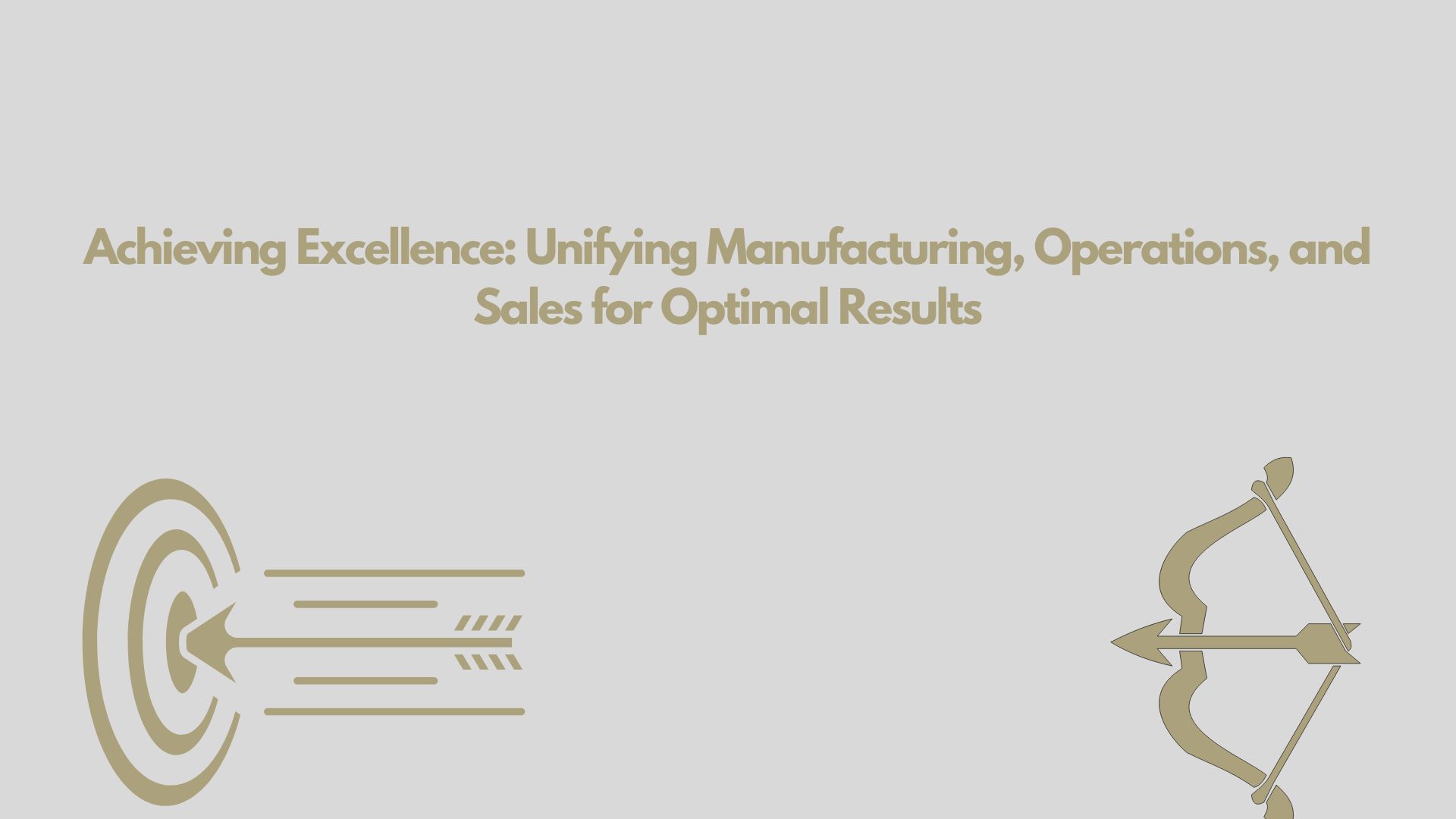In the pursuit of business excellence, the integration of manufacturing, operations, and sales is crucial for achieving optimal results. These three pillars, when unified effectively, create a streamlined workflow that enhances efficiency, reduces costs, and drives growth. Here’s how to achieve excellence by bringing these elements together in a cohesive strategy.
1. Unifying Manufacturing
Manufacturing is the starting point of product creation, and optimizing this process sets the stage for success across the entire business. To unify manufacturing efforts:
- Process Standardization: Establish standardized procedures and best practices across manufacturing operations to ensure consistency and quality. Standardization helps in reducing errors and increasing efficiency.
- Cross-Functional Teams: Create cross-functional teams that include members from engineering, production, and quality control. This fosters collaboration and ensures that all aspects of manufacturing are aligned with overall business goals.
- Real-Time Monitoring: Implement real-time monitoring systems to track production metrics, identify issues quickly, and make data-driven adjustments. This proactive approach minimizes downtime and optimizes production schedules.
2. Streamlining Operations
Operations management involves overseeing day-to-day activities to ensure smooth and efficient processes. To streamline operations:
- Integrated Systems: Use integrated management systems, such as ERP (Enterprise Resource Planning), to connect various operational functions, from procurement to logistics. This integration ensures that information flows seamlessly and decisions are based on accurate data.
- Operational Efficiency: Focus on continuous improvement initiatives, such as Lean and Six Sigma, to identify and eliminate inefficiencies in operations. Regularly review processes to adapt to changing market conditions and technological advancements.
- Performance Metrics: Establish and monitor key performance indicators (KPIs) for operational efficiency, including cycle times, inventory levels, and cost per unit. Analyzing these metrics helps in identifying areas for improvement and making informed operational decisions.
3. Enhancing Sales
Sales drive revenue and customer acquisition, making it essential to align sales strategies with manufacturing and operations. To enhance sales performance:
- Aligned Sales Strategies: Develop sales strategies that complement manufacturing capabilities and operational efficiencies. Ensure that sales goals are realistic and achievable based on production capacity and inventory levels.
- Customer Feedback Loop: Create a feedback loop where sales teams provide insights from customers to manufacturing and operations. This helps in adjusting product features, quality, and delivery schedules to meet customer expectations.
- Sales Enablement: Equip your sales team with the tools and resources they need to succeed, including training, CRM systems, and up-to-date product information. Empowered sales professionals can drive higher conversion rates and build stronger customer relationships.
Integrating the Components
For true excellence, integrating manufacturing, operations, and sales into a unified strategy is key:
- Collaborative Planning: Foster collaboration between manufacturing, operations, and sales teams through joint planning sessions and regular communication. This ensures that all departments are aligned and working towards common objectives.
- Data Integration: Use data analytics to create a comprehensive view of business performance across all areas. Integrating data from manufacturing, operations, and sales allows for more accurate forecasting, better decision-making, and a holistic understanding of business dynamics.
- Feedback and Adaptation: Implement a system for continuous feedback and adaptation. Regularly review performance across manufacturing, operations, and sales to identify successes and areas for improvement. Adapt strategies based on insights to maintain alignment and drive ongoing excellence.
By unifying manufacturing, operations, and sales, businesses can achieve a harmonious workflow that maximizes efficiency and drives optimal results. This integrated approach not only enhances operational effectiveness but also positions the company for sustained success and competitive advantage in the marketplace.
4o mini









